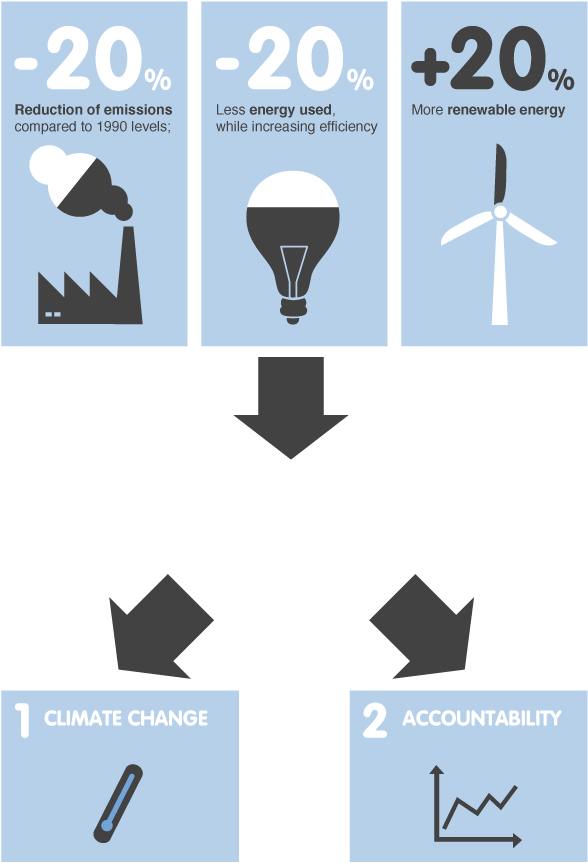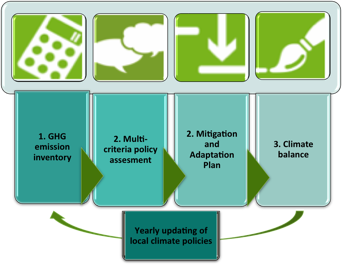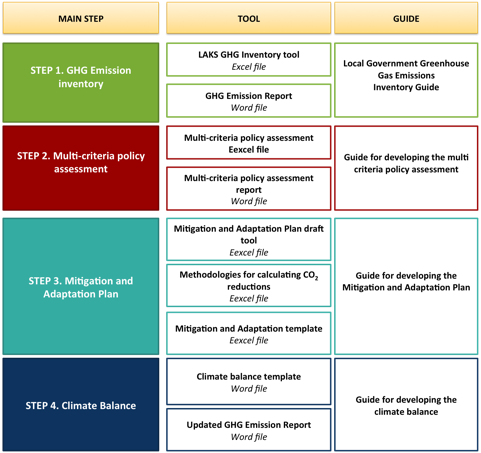The LAKS project (Local Accountability for Kyoto Goals) was conceived in order to embed in municipality’s decision making and accountability processes all those policies implemented to tackle climate change.

The particular nature of climate change policies is, in fact, that they are inter-sectorial among classical municipality’s department. This means that is more difficult than for other sort of policies to have a complete overlook of what the municipality is doing and, more than that, have the possibility to monitor results.
Overcoming this limit is very challenging and it is often the reason for the lack of commitment of cities, in these themes. For this reason, during the project have been developed tools and processes that can be applied in each municipality that have to deal with climate policies.
The LAKs project (Local Accountability for Kyoto goalS) aims at showing the cities potential in grasping existing opportunities and synergies to actively contribute to the achievement of the Kyoto goals, and more actual, the targets set by the European Commission within the Climate Action and renewable energy package approved in December 2008 and the targets set by the Covenant of Mayor campaign.
Cities are very important subjects in this struggle, since they have the double role of planners and warrantor of integrity of the local capital and reality, and at the same time they have a vision of the local problems and peculiarities. Hence they are the most appropriate actors to operate and plan policies and incentives which are effective for GHG emission reduction, and design adaptation plans which result synergetic to the firsts.
Finally, municipalities as direct representatives of the population and guarantees of local welfare and wellness, are legitimate to act straight to reduce GHG emission, since the benefits trickle down firstly on the local population. The LAKs project focuses on two issues, which are the keys for a sustainability local policy: climate change and accountability.
Regarding the first aspect, the common focal point is the targets set by the European Commission, that is, by 2020:
• reducing overall emissions to 20% below 1990 levels;
• reducing by 20% the energy use, increasing energy efficiency;
• increasing the share of renewables in energy use to 20%.
Reaching these goals requires a real commitment by each subject with a role in society.
The second issue deals with transparency of the policy making process, responsibility and population involvement. With one word: accountability. Tools developed in literature on this issue in fact support local authorities in developing a linear decision making process, where target are set, measures are implemented, results are measured and publicized among the population.
The project has the following goals:
• Locally contribute to the targets included in the EC climate action, stressing on the principle of subsidiarity of local authorities.
• Give to local authorities the tools and means to ease the introduction of GHG emission reduction targets within the policies of the municipality.
• Develop a method to assess univocally the impact of policy measures on emissions.
• Increase transparency and accountability within local authorities, mainly on environmental issues and GHG emissions.
LAKS final manual structure
This manual has been developed in order to offer to Municipalities operative tools to implement a local climate strategy and a Mitigation and Adaptation plan. In particular, the process have been distinguished in 4 main steps with correspondents tools and guide.
The four steps are necessary to define the local climate policy and achieve a complete accountability system on these issues. Each step assist the local municipality to develop specific tools useful for the achievement of project results. The process is summed up in the following picture, each one of them is described below.

STEP 1. GHG Emission Inventory
This step aims at developing a local inventory of the main GHG emissions generated at local level taking into account the most relevant sectors (energy production, public buildings, public lighting, residential and industrial sector etc.). This represents the baseline on which the Mitigation and Adaptation plan will be based to define municipality’s emission reduction target emission reduction target.
STEP 2. Multi-criteria policy assessment
The Multi criteria policy assessment has been developed in order to identify the most suitable interventions to be included in the Mitigation and Adaptation plan, it aims at:
• evaluating the local environmental, social and economic impacts linked with the implementation of policies and interventions to be included in the Mitigation and Adaptation Plan;
• helping authorities to select the best option interventions;
• driving the path from the inventory to the plan by helping municipalities in thinking about different possible options by taking into account environmental, social and economic impacts;
• Creating an useful database of possible policies to reduce CO2 emissions at local level.
STEP 3. Mitigation and Adaptation Plan
This step aims at developing the Mitigation and Adaptation Plan by:
• Developing a plan that includes all interventions that can reduce GHG emissions at municipal level;
• Involving municipality’s different sectors in understanding what they can do to reduce GHG emissions at local level;
• Setting targets and specific responsibilities to make easier monitoring results.
STEP 4. Climate balance
The Climate Balance is the monitoring system developed by the LAKS project is order to yearly evaluate the state of implementation of policies included in the Mitigation and Adaptation Plan and consequent results obtained. You can compile the Climate Balance every year in order to make it a continuous accountability process and integrate the Mitigation and Adaptation Plan in the decision making process of your Municipality.
The following figure shows for each step the contents you will find in this Final Manual




